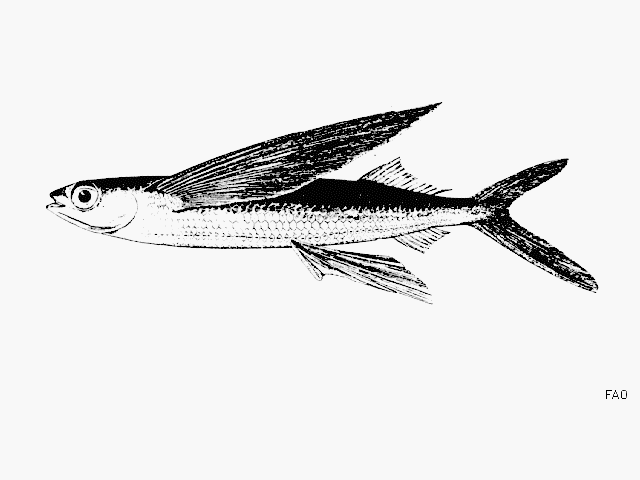| Exocoetidae (Flyingfishes) |
| 41 cm TL (male/unsexed) |
|
pelagic-neritic; marine; depth range 0 - 20 m, oceanodromous |
| Worldwide in the tropics, occasionally as far north as Santa Catalina Island in southern California, USA. |
|
Dorsal spines (total): 0-0; Dorsal soft rays (total): 12-14; Anal spines: 0-0; Anal soft rays: 8-11; Vertebrae: 47-49. Branchiostegal rays: 10-12. |
| Adults are epipelagic in coastal waters (Ref. 9300), also enter neritic zone (Ref. 36606). Capable of leaping out of the water and gliding for considerable distances above the water (Ref. 9300). Oviparous, with planktonic larvae (Ref. 36606). Eggs are attached to one another and to kelp and other floating objects via long filaments (Ref. 36606). |
|
Not Evaluated (N.E.) Ref. (130435)
|
| harmless |
|
Source and more info: www.fishbase.org. For personal, classroom, and other internal use only. Not for publication.

